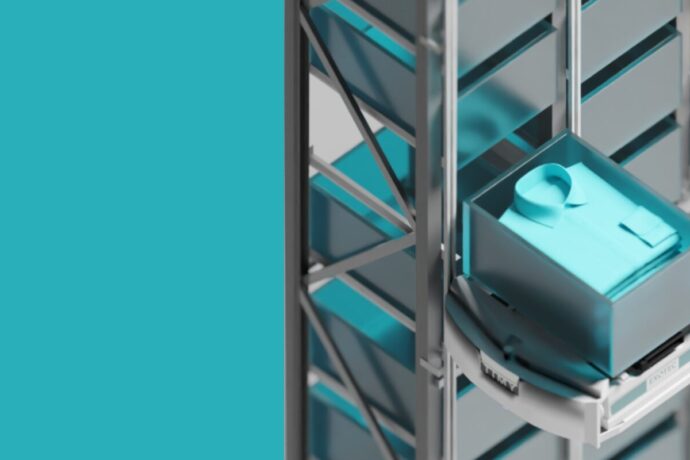
Reinventing ourselves to avoid suffering. In the ever-changing world of fashion, companies in the sector face unprecedented challenges in meeting the needs of increasingly demanding and unpredictable consumers. Warehouses play a central role in this equation, as they are the cornerstone of supply chain strategies, at the confluence of increasingly complex supply and distribution channels. In this article, we explore some of the areas of innovation that need to be invested in, in order to transform these storage centres into true hubs of efficiency, responsiveness and profitability.
Demand forecasting and agile planning
One of the major challenges facing apparel companies today is to succeed in forecasting, as accurately as possible, a demand that is constantly changing, and increasingly subject to uncertainty, as we deciphered in this article on the seasonality – both predictable and unpredictable – that characterises the apparel industry. Previously limited to the design of statistical models, innovation in this field now lies in the adoption of advanced technologies such as machine learning, predictive analysis and neural networks to analyse past and current trends. The aim is to produce increasingly comprehensive forecasts, to understand future consumer behaviour and to anticipate future supply needs.
Within the warehouses themselves, a healthy dose of agile planning is also essential to enable the facility – and its staff – to adapt quickly to fluctuations in demand. Modern apparel warehouses use agile supply chain management systems to optimise stock levels through agile data management, reduce costs and minimise delays. Forward-looking management of resources and skills, to adapt the number and qualifications of employees to the needs of the warehouse, as well as alternative strategies such as the introduction of automated or even robotised solutions to meet labour shortages and limit the drudgery of work for operators, are also part of warehouses that want to stay at the cutting edge and plan for the future.
Intelligent, flexible storage solutions
Storage space is precious in clothing warehouses. Here, innovation lies in the implementation of intelligent and flexible storage solutions. Automated stock management systems optimise the use of space and minimise management errors. Modular shelving and other scalable storage systems offer essential flexibility to adapt to changes in the product range.
In addition, advanced stock management using RFID (Radio-Frequency Identification) or NFC (Near Field Communication) technology enables real-time traceability, reducing losses and improving inventory accuracy.

Working with manufacturers and suppliers
Close collaboration with manufacturers and suppliers is a key element of innovation in clothing warehouses. It is all the more important to deal with the fact that it has become increasingly complex as the clothing industry evolves and new supply chain strategies emerge. In this area, strategic partnerships make it possible to reduce lead times and optimise costs. Supplier relationship management (SRM) systems and real-time communication platforms can facilitate coordination between supply chain players.
In addition, the introduction of more sustainable and ethical production processes through collaboration with manufacturers enables clothing companies to respond to growing consumer concerns about social and environmental responsibility, as has been clearly understood by certain brands whose identity is based on a fundamentally ethical and sustainable approach to clothing.
Improving order preparation processes
The efficiency of order preparation processes has a direct impact on customer satisfaction, and the well-being at work of the warehouse operators themselves. Innovation in this area means automating repetitive tasks such as picking and packing. Autonomous robots and intelligent conveyor systems speed up order processing and reduce errors.
At the forefront of this drive for efficiency, some intralogistics players are even integrating the use of augmented reality and virtual reality into their operations to help employees quickly locate the required items, thereby improving the accuracy and speed of the order-picking process.

Integrating new technologies for efficient intralogistics
Integrating new technologies is essential for efficient intralogistics. Apparel warehouses are adopting advanced warehouse software to optimise the receipt, storage, preparation and dispatch of products. The Internet of Things (IoT) is used to monitor storage conditions such as temperature and humidity in real time, ensuring product quality.
For clothing warehouses, defining and implementing an innovation strategy is no longer really an option, in the ultra-competitive context of this sector where the supply chain obviously has a huge role to play in customer satisfaction and loyalty.
Solutions tailored to the clothing industry
Exotec designs, produces and maintains robotic solutions for warehouses worldwide. In particular for the ready-to-wear and footwear sectors, which account for almost 50% of our projects. Our Skypod® system is particularly well-suited to the challenges of clothing warehouses, offering the performance, responsiveness and flexibility that intralogistics operators in this sector need.
Share
Insights
-
October 27,2025Supply Insights | Spare Parts
-
October 21,2025How to combine ESG & industry? (podcast)
-
August 5,2025Value Chain vs. Supply Chain: What's the Difference?
Events
-
November 4,2025 | UtrechtLogistica Next 2025: your logistics revolution starts here
Ready to transform your warehouse?
Let us show you how we can take your order preparation to the next level.

